Recipient Glycemic Micro-environments Govern Therapeutic Effects of Mesenchymal Stem Cell Infusion on Osteopenia
- PMID: 28435461
- PMCID: PMC5399589
- DOI: 10.7150/thno.18181
Recipient Glycemic Micro-environments Govern Therapeutic Effects of Mesenchymal Stem Cell Infusion on Osteopenia
Abstract
Therapeutic effects of mesenchymal stem cell (MSC) infusion have been revealed in various human disorders, but impacts of diseased micro-environments are only beginning to be noticed. Donor diabetic hyperglycemia is reported to impair therapeutic efficacy of stem cells. However, whether recipient diabetic condition also affects MSC-mediated therapy is unknown. We and others have previously shown that MSC infusion could cure osteopenia, particularly in ovariectomized (OVX) mice. Here, we discovered impaired MSC therapeutic effects on osteopenia in recipient type 1 diabetes (T1D). Through intensive glycemic control by daily insulin treatments, therapeutic effects of MSCs on osteopenia were maintained. Interestingly, by only transiently restoration of recipient euglycemia using single insulin injection, MSC infusion could also rescue T1D-induced osteopenia. Conversely, under recipient hyperglycemia induced by glucose injection in OVX mice, MSC-mediated therapeutic effects on osteopenia were diminished. Mechanistically, recipient hyperglycemic micro-environments reduce anti-inflammatory capacity of MSCs in osteoporotic therapy through suppressing MSC interaction with T cells via the Adenosine monophosphate-activated protein kinase (AMPK) pathway. We further revealed in diabetic micro-environments, double infusion of MSCs ameliorated osteopenia by anti-inflammation, attributed to the first transplanted MSCs which normalized the recipient glucose homeostasis. Collectively, our findings uncover a previously unrecognized role of recipient glycemic conditions controlling MSC-mediated therapy, and unravel that fulfillment of potent therapeutic effects of MSCs requires tight control of recipient micro-environments.
Keywords: Mesenchymal stem cells; anti-inflammation.; cell therapy; glycemic micro-environment; osteopenia; recipient.
Conflict of interest statement
Competing Interests: The authors have declared that no competing interest exists.
Figures

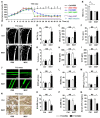
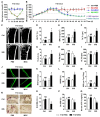
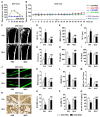
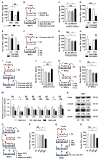
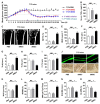
Similar articles
-
Extracellular vesicles rejuvenate the microenvironmental modulating function of recipient tissue-specific mesenchymal stem cells in osteopenia treatment.Front Endocrinol (Lausanne). 2023 Mar 22;14:1151429. doi: 10.3389/fendo.2023.1151429. eCollection 2023. Front Endocrinol (Lausanne). 2023. PMID: 37033255 Free PMC article. Review.
-
Multiple intravenous infusions of bone marrow mesenchymal stem cells reverse hyperglycemia in experimental type 2 diabetes rats.Biochem Biophys Res Commun. 2013 Jul 5;436(3):418-23. doi: 10.1016/j.bbrc.2013.05.117. Epub 2013 Jun 11. Biochem Biophys Res Commun. 2013. PMID: 23770360
-
Allogeneic Mesenchymal Stem Cell Therapy Promotes Osteoblastogenesis and Prevents Glucocorticoid-Induced Osteoporosis.Stem Cells Transl Med. 2016 Sep;5(9):1238-46. doi: 10.5966/sctm.2015-0347. Epub 2016 Jun 30. Stem Cells Transl Med. 2016. PMID: 27365487 Free PMC article.
-
HCELL Expression on Murine MSC Licenses Pancreatotropism and Confers Durable Reversal of Autoimmune Diabetes in NOD Mice.Stem Cells. 2015 May;33(5):1523-31. doi: 10.1002/stem.1948. Stem Cells. 2015. PMID: 25641589 Free PMC article.
-
Stem cell-based bone regeneration in diseased microenvironments: Challenges and solutions.Biomaterials. 2019 Mar;196:18-30. doi: 10.1016/j.biomaterials.2017.10.046. Epub 2017 Oct 30. Biomaterials. 2019. PMID: 29122279 Review.
Cited by
-
Synergistic Improvement in Children with Cerebral Palsy Who Underwent Double-Course Human Wharton's Jelly Stem Cell Transplantation.Stem Cells Int. 2019 Sep 17;2019:7481069. doi: 10.1155/2019/7481069. eCollection 2019. Stem Cells Int. 2019. PMID: 31636676 Free PMC article.
-
Stem cell-based bone and dental regeneration: a view of microenvironmental modulation.Int J Oral Sci. 2019 Aug 19;11(3):23. doi: 10.1038/s41368-019-0060-3. Int J Oral Sci. 2019. PMID: 31423011 Free PMC article. Review.
-
Residual periodontal ligament in the extraction socket promotes the dentin regeneration potential of DPSCs in the rabbit jaw.Stem Cell Res Ther. 2023 Mar 20;14(1):47. doi: 10.1186/s13287-023-03283-x. Stem Cell Res Ther. 2023. PMID: 36941706 Free PMC article.
-
Gender-independent efficacy of mesenchymal stem cell therapy in sex hormone-deficient bone loss via immunosuppression and resident stem cell recovery.Exp Mol Med. 2018 Dec 17;50(12):1-14. doi: 10.1038/s12276-018-0192-0. Exp Mol Med. 2018. PMID: 30559383 Free PMC article.
-
Mesenchymal stem cells: Emerging concepts and recent advances in their roles in organismal homeostasis and therapy.Front Cell Infect Microbiol. 2023 Mar 9;13:1131218. doi: 10.3389/fcimb.2023.1131218. eCollection 2023. Front Cell Infect Microbiol. 2023. PMID: 36968100 Free PMC article. Review.
References
-
- Kharaziha P, Hellstrom PM, Noorinayer B, Farzaneh F, Aghajani K, Jafari F. et al. Improvement of liver function in liver cirrhosis patients after autologous mesenchymal stem cell injection: a phase I-II clinical trial. Eur J Gastroenterol Hepatol. 2009;21:1199–205. - PubMed
-
- Duijvestein M, Vos AC, Roelofs H, Wildenberg ME, Wendrich BB, Verspaget HW. et al. Autologous bone marrow-derived mesenchymal stromal cell treatment for refractory luminal Crohn's disease: results of a phase I study. Gut. 2010;59:1662–9. - PubMed
Publication types
MeSH terms
Substances
LinkOut - more resources
Full Text Sources
Other Literature Sources
Medical

